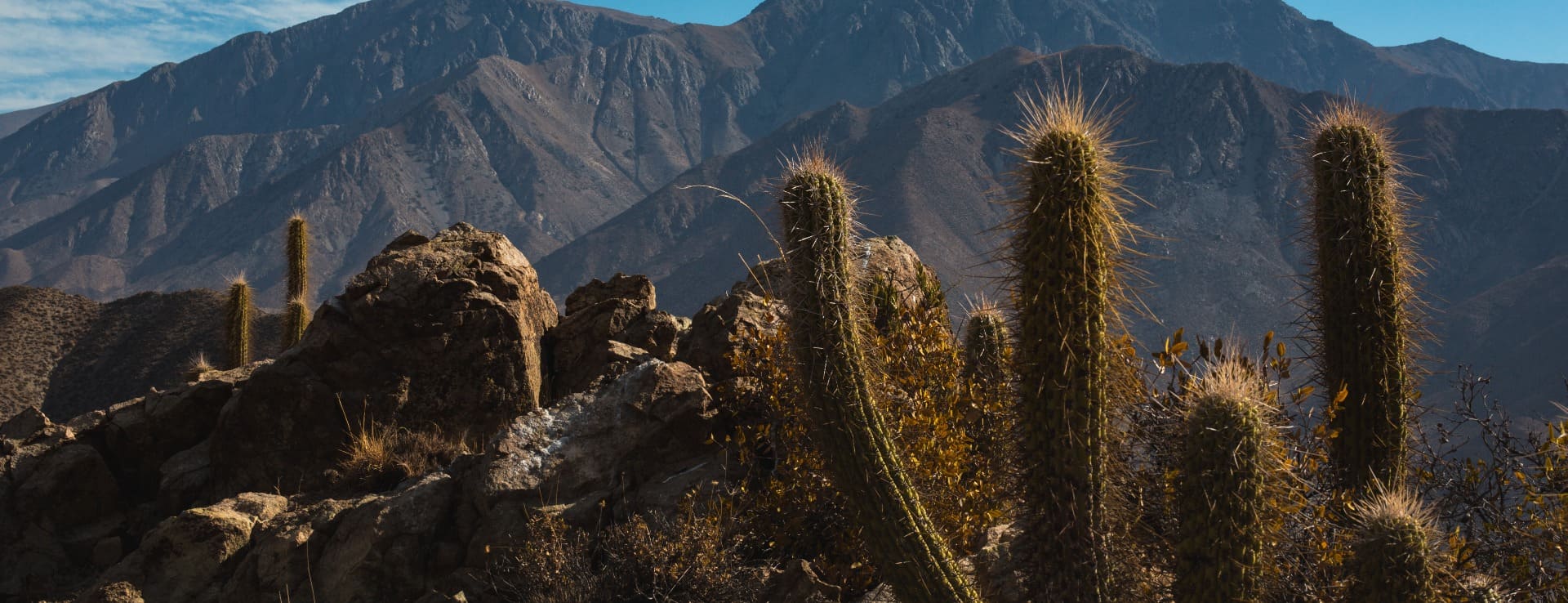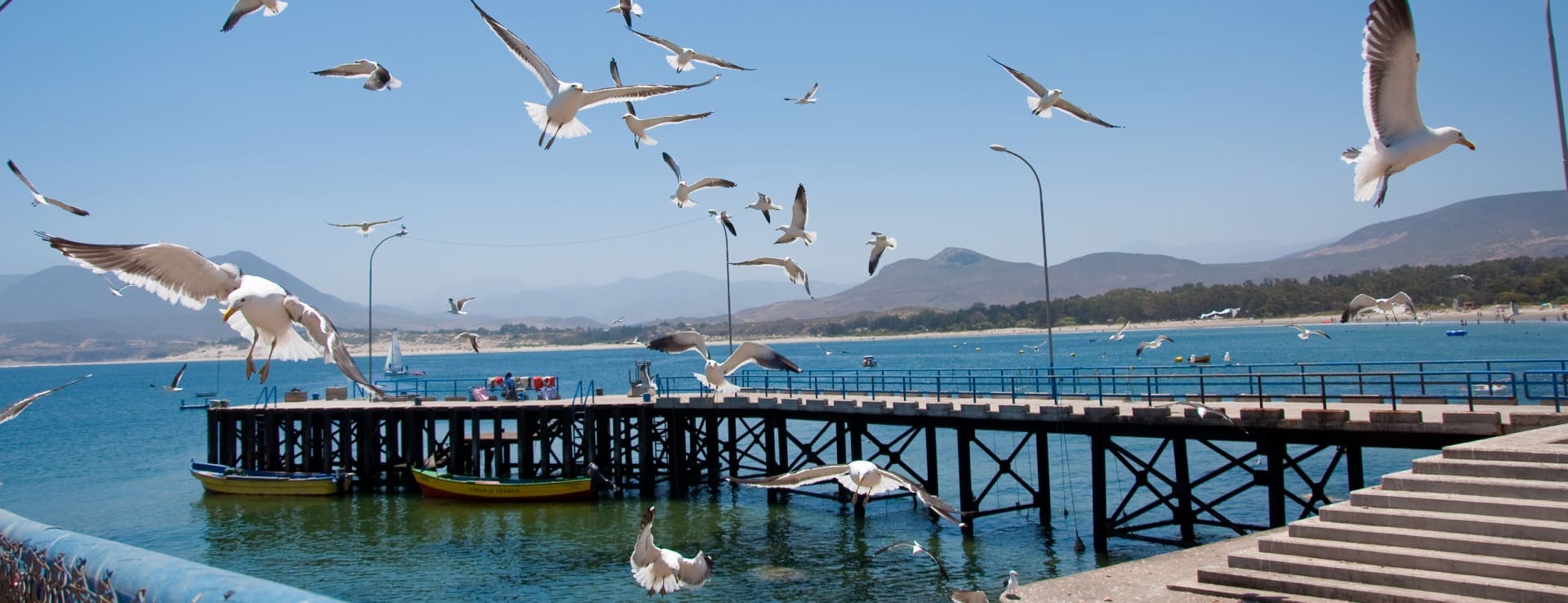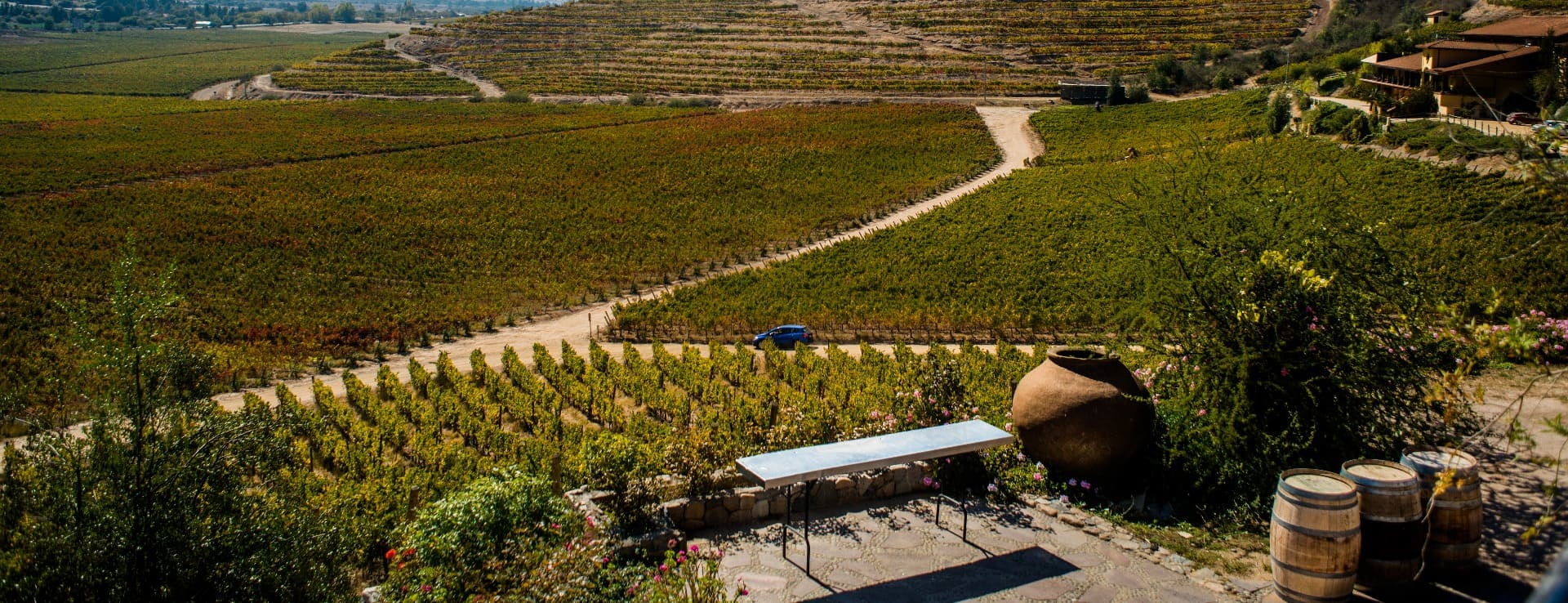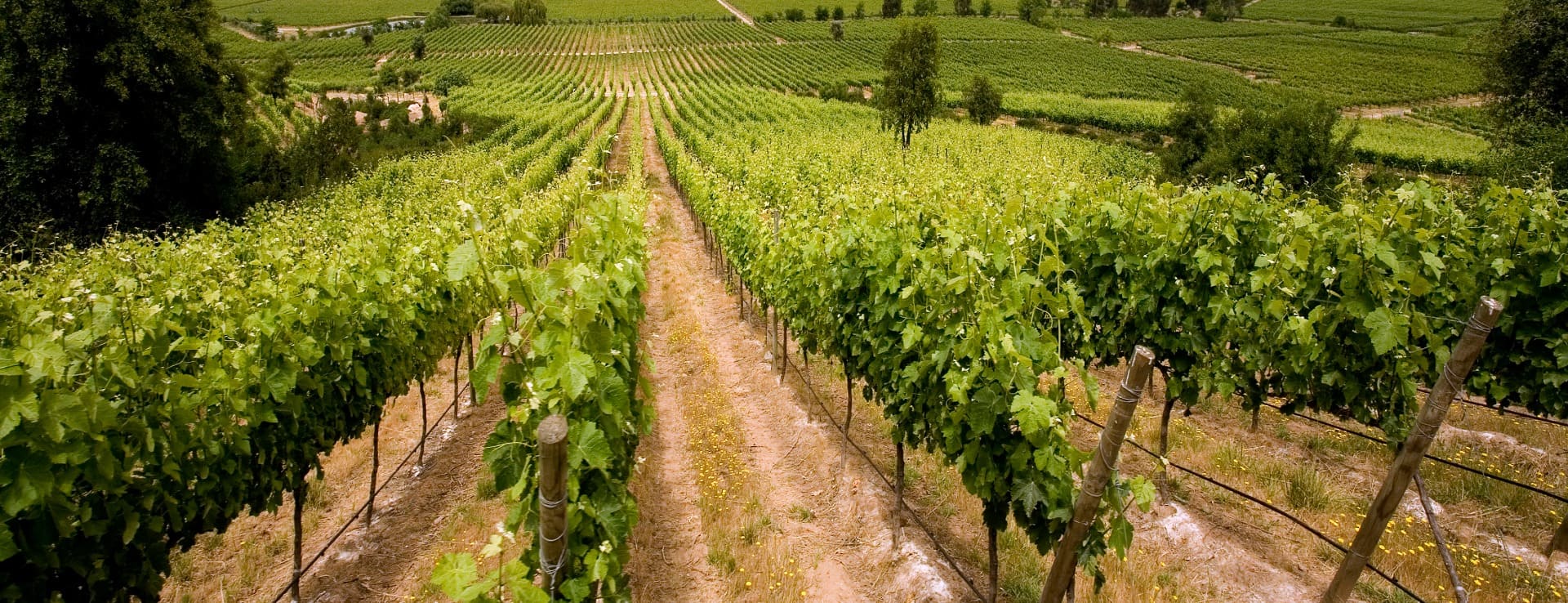Find your winery or vineyard
Infographic of the Denomination of Origin
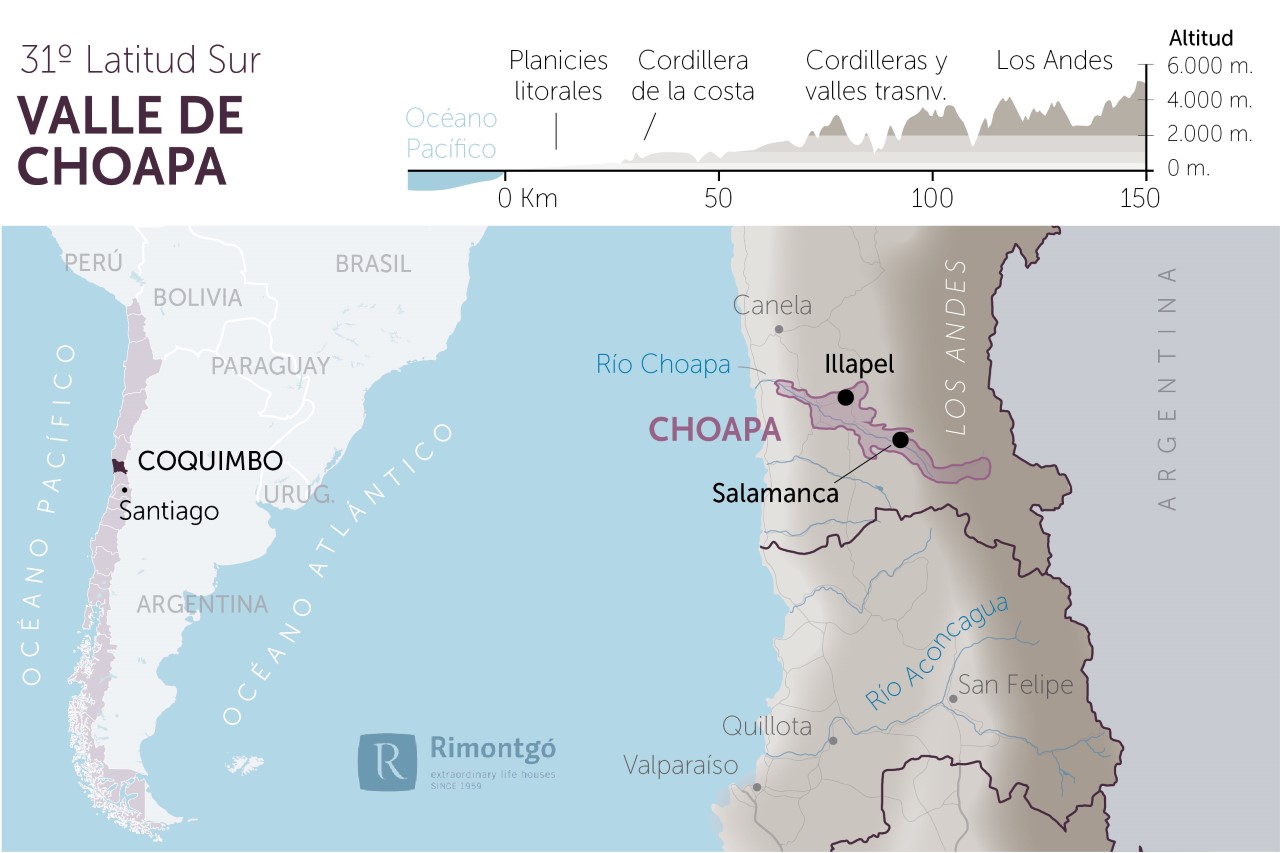
Change to imperial units (ft2, ac, °F)Change to international units (m2, h, °C)
Total surface area:
1.632 ha4.033 ac
Altitude of the vineyards:
Min: 400m
Max: 600m
Min: 1.312ft
Max: 1.969ft
Temperature:
Min: 6º
Max: 25º
Min: 43°F
Max: 77°F
Yearly rainfall:
100 l/m29 l/ft2
Choapa
As it happens with the neighbouring provinces of Elqui and Limarí, the Choapa province has the roots of its name in the Choapa river reaching a length of 140 kilometres. The city with the largest population is Illapel. It is the southernmost of the three provinces that compose the Coquimbo region (Choapa, Elqui and Limarí). In addition to the cultivation of vine, in the Choapa province also stand out organic and olive crops present in Los Vilos. The horticultural activity of the Quilimarí Valley oil press, in the country estate Los Cóndores, which has international recognition, also stands out.
HISTORY OF WINE
In countries such as Chile, Peru or Venezuela the beverage derived from the non-distilled fermentation of corn or other cereals is called 'chicha'. For instance, the Mapuches drink a type of chicha of corn or wheat called 'muday'. In the case of the Choapa province, some wineries produce the locally known chacolo or chacolí, a similar wine to the original chicha, although less sweet. The chacolo is let stand in clay pots, a clay used in pottery 200 years old. The chacolo recipe is kept by artisan producers located in Cancha Brava, in the Chalinga valley.
The chacolí arrived in Chile at the end of the 18th century and is based on the tradition of sweet mass wines. The Basques see in the vineyards of the central-northern area, in the Transverse valleys and the Aconcagua valley, similar grape features in order to produce a similar wine to that which they prepared in their homeland. Originally in Spain it was a young and fruity wine, in Chile acquires a sweeter characteristic as the grape naturally concentrates a lot of sugar.
WINES AND WINERIES
There is an autochthonous chacolí in the Choapa province, whose possible origin linked to the Spanish chacolí is still a field where there are blank spaces to be filled. Some studies point out that the chacolí lived together with wine and chicha in ancient times, quickly settling among the preferences of Chilean people. The chacolí was present in traditional festivals of ordinary people and there are also references about it in the writings of popular Chilean authors.
The quality of chacolí was degrading between five and six months after its production due to the lack of sugar and tannins. The chacolí produced both in the wineries of the Choapa Valley and the Copiapó Valley, together with the pajarete of the Huasco Valley and the Elqui Valle, are products of the dry and semi-arid climate of the provinces of the north of Chile that beside an high luminosity are factors that contribute to the ripening of grapes with a high sugar concentration.
POINTS OF INTEREST
The Choapa province is the greener region in Coquimbo, so it is an attractive destination for ramblers and adventure sport lovers. The most sought-after locations among tourists are the Conchalí lagoon, a natural refuge for about 100 of animal species, some of which come from the Artic. It is highly recommended to stop in the viewpoints allowed in order to observe birds such as the curlew or the Franklin's gull.
Other locations of great interest in the Choapa province is, without any doubt, Las Chinchillas National Reserve, situated within close proximity to the municipality of Auxó. It is the only world's reserve of chinchillas, a species at risk due to their wafer-thin fur. In order to see them, the reserve has made available to visitors the so-called 'nocturama', a unique setting in the southern Hemisphere that allows to see the chinchilla in its natural habitat when it is most active: at night.
One of the most visited destinations in Choapa is the locality of Mincha, the oldest town of the province, founded in 1962. Colonial-style houses built around the Nuestra Señora de la Candelaria church, declared National Historic Landmark. Surrounding the municipality of Salamanca, it is possible to visit ancient tobacco curing ovens that indicate the historic importance of its cultivation in the province.
D.O./Valle (wine regions)
Discover more wineries and vineyards for sale in these wine regions in Chile
Subscribe to our mailing list to receive news about wineries and vineyards.

